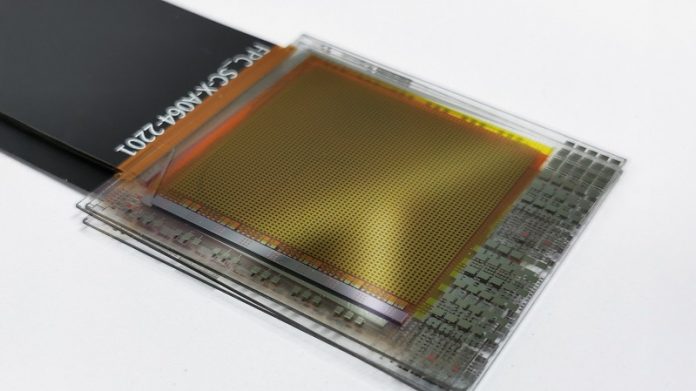
Every smartphone and digital camera uses image sensors to capture photos, working in a way similar to our eyes.
Human eyes have cone cells to see red, green, and blue (RGB), and image sensors do the same using tiny pixels that detect different colors.
But today’s sensors are mostly made from silicon, a material that can detect all colors of light at once.
To separate the colors, silicon sensors use filters—one for red, one for green, and one for blue. This means each pixel only gets about a third of the light, while the rest is blocked and wasted.
Researchers at ETH Zurich and Empa, led by Maksym Kovalenko, have been working on a new kind of image sensor using a material called perovskite.
Unlike silicon, perovskite can be tuned to absorb specific colors by simply changing its chemical makeup.
For example, adding more iodine helps it absorb red light, bromine for green, and chlorine for blue. Importantly, each layer remains clear to other colors, which means the red, green, and blue layers can be stacked on top of each other instead of side by side.
This vertical stacking allows each pixel to use all the incoming light, instead of just one-third, and creates room for more pixels in the same space.
As a result, perovskite image sensors could offer three times the brightness and three times the resolution of today’s silicon-based sensors.
Kovalenko’s team recently built two working prototypes using this technology. While their earlier tests used large crystal pixels, the new versions use thin films that are much closer to real-world applications.
These early models still have large pixels—between 0.5 and 1 millimeter wide—but the researchers believe they can shrink them further, eventually making them even smaller than what silicon allows.
Their tests showed that perovskite sensors are more sensitive to light and more accurate in capturing color.
Because each pixel sees the full color image, it also avoids common digital photo issues like the moiré effect or the need for complicated color reconstruction.
Beyond consumer photography, these sensors could be useful in advanced imaging tasks where seeing beyond just red, green, and blue is important.
Perovskite’s flexibility allows for the creation of custom sensors that can detect many specific colors, which could help in medical imaging, environmental monitoring, or analyzing crops in agriculture.
To move forward, the team needs to adapt existing electronics to work with perovskite’s unique properties. But they are confident this new technology could eventually lead to more powerful, compact, and versatile image sensors that far outperform what we use today.



